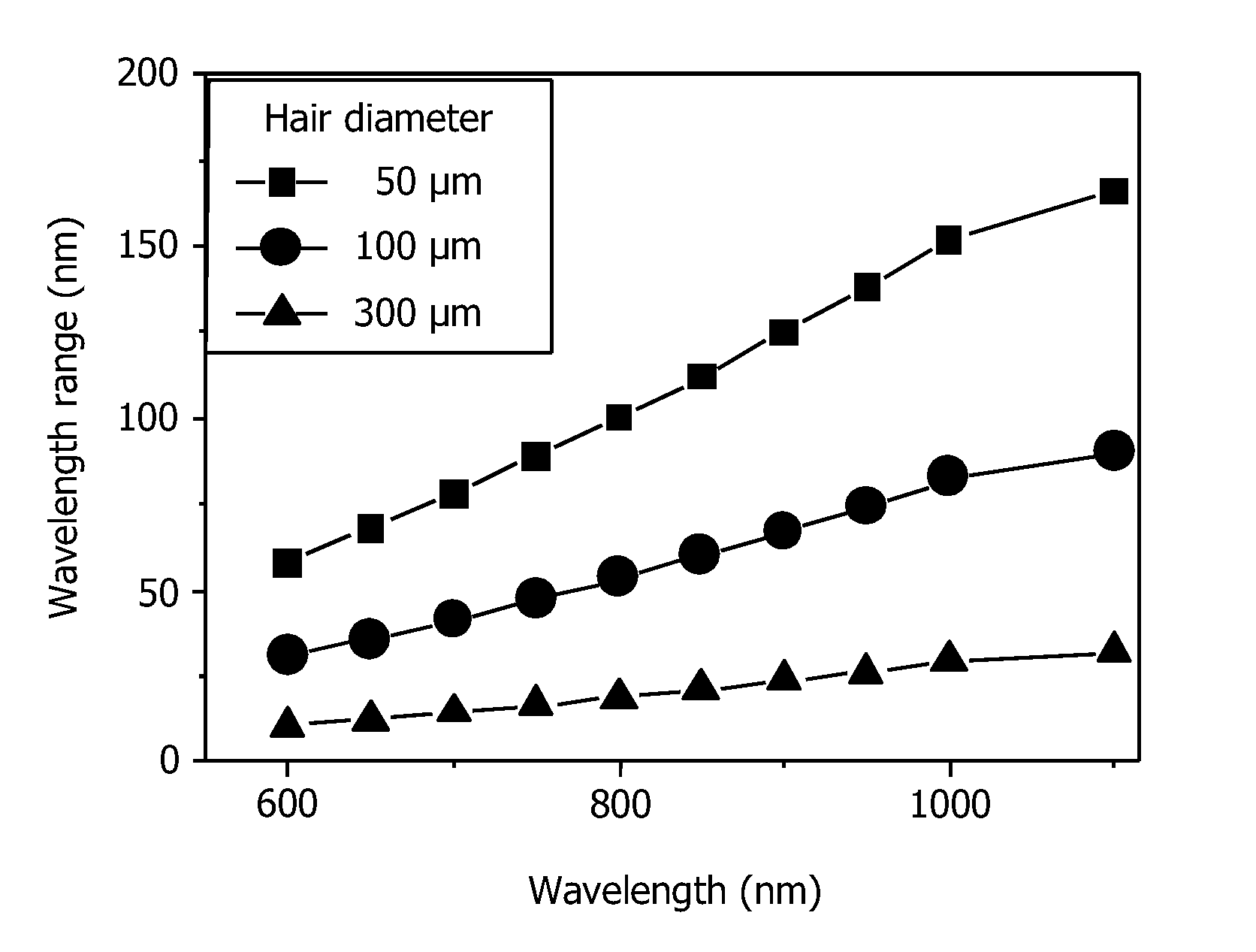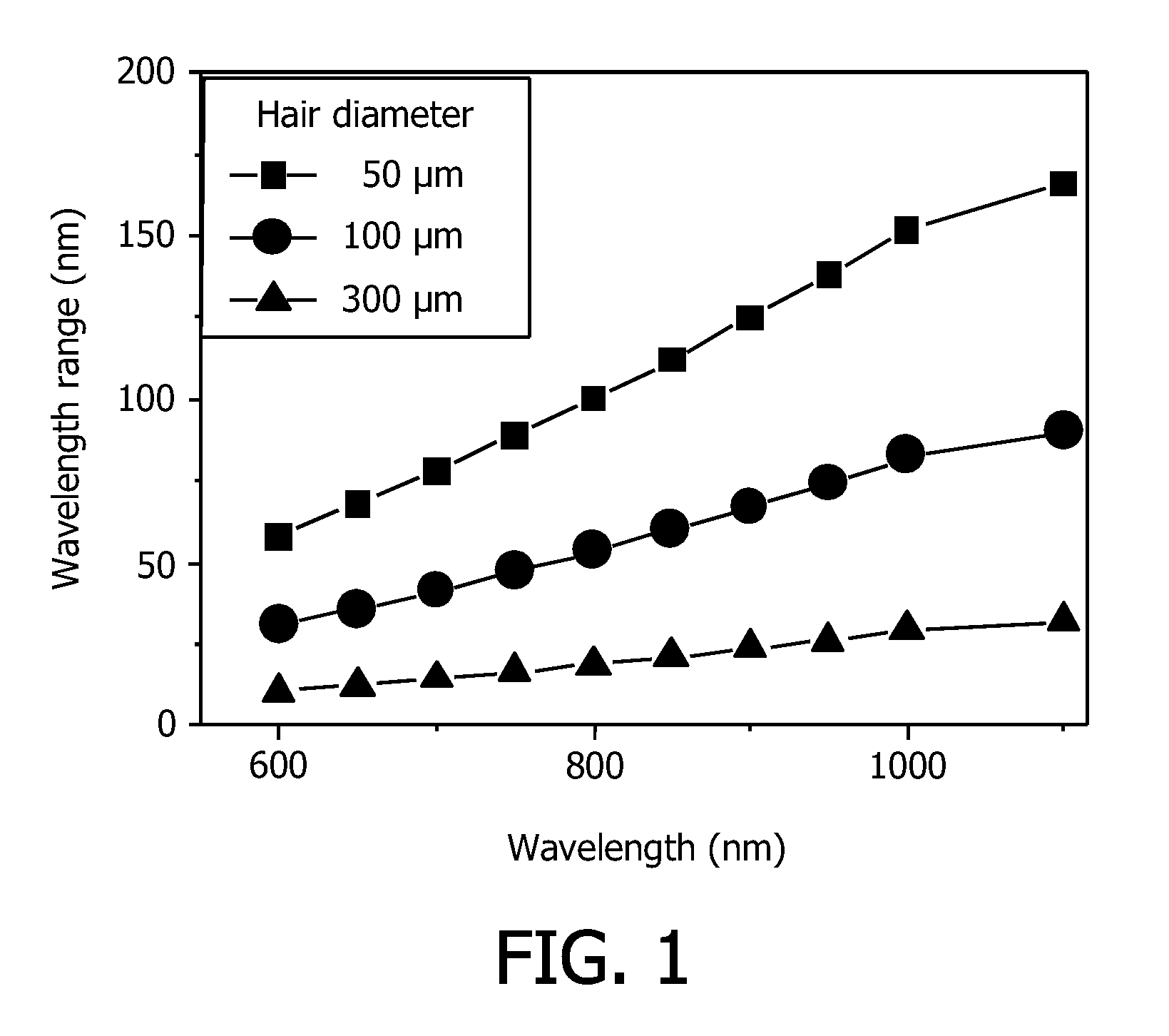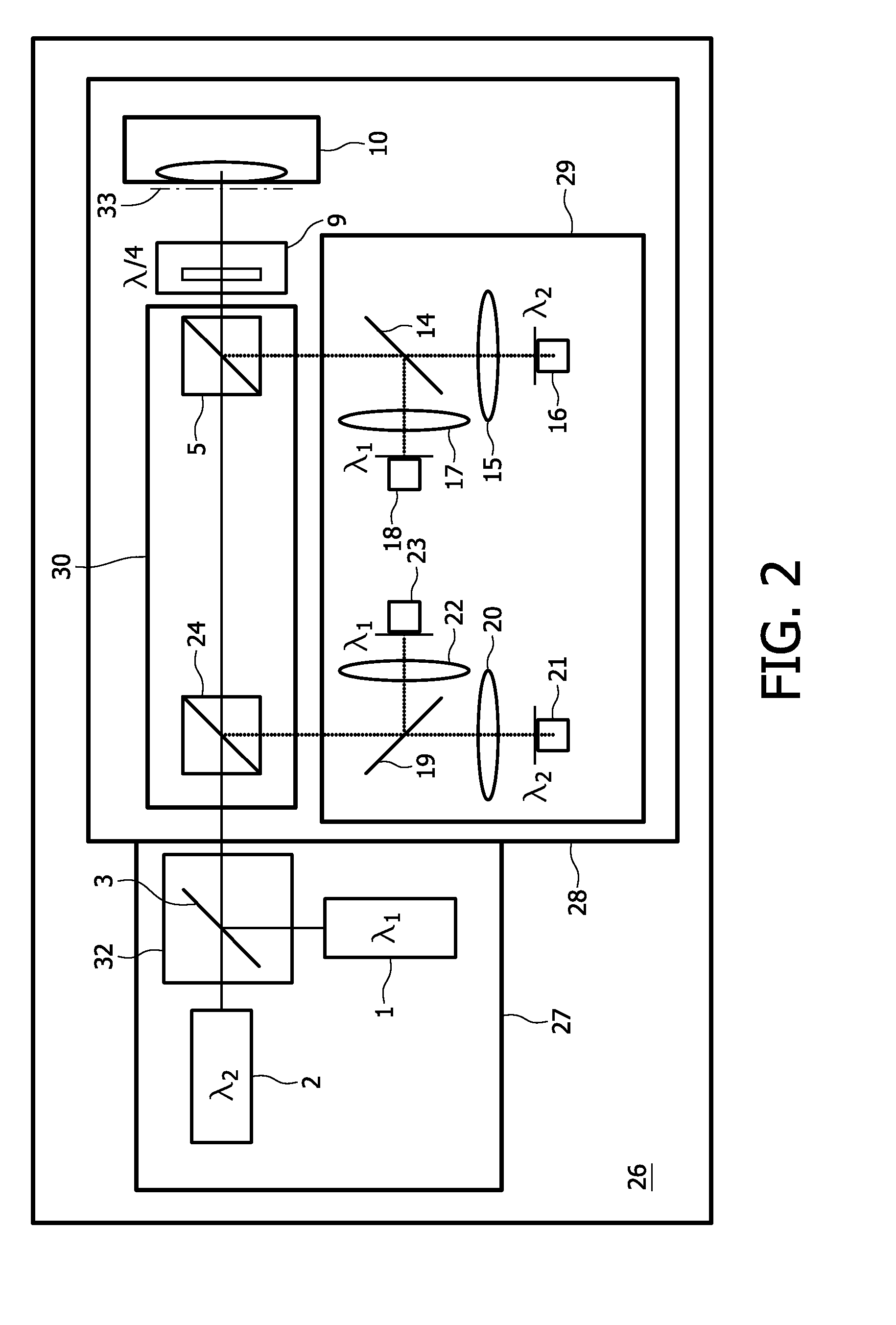Detector for birefringent objects
a detector and object technology, applied in the field of detectors, can solve the problems of high cost of implementing such a shaving process, difficult to detect and localize each hair with a high resolution, and complex shaving devices, so as to avoid false negatives, improve hair detection efficiency, and high shaving efficacy
- Summary
- Abstract
- Description
- Claims
- Application Information
AI Technical Summary
Benefits of technology
Problems solved by technology
Method used
Image
Examples
Embodiment Construction
[0034]In CLSM-based hair detection, discrimination between a hair and skin surface is difficult due to skin reflectance. Polarization-sensitive confocal detection of light scattered and / or reflected by a hair adapted for increasing the specificity and efficacy of detection is going to be described hereinafter by means of four preferred embodiments of the invention. The principle is based on discriminating the polarization change induced by the birefringence of a hair, preferably the birefringence of the hair cortex, from the background skin signal. In CLSM, a hair appears either as a bright or a dark object, depending on the direction of the incident polarization state or the electric field with respect to the hair axis.
[0035]At the same time, the signal from the skin remains independent of the direction of the incident polarization state. This is due to superficial layers of the skin surface which are not birefringent. Hence, a polarization change provides the basis for discriminat...
PUM
 Login to View More
Login to View More Abstract
Description
Claims
Application Information
 Login to View More
Login to View More - R&D
- Intellectual Property
- Life Sciences
- Materials
- Tech Scout
- Unparalleled Data Quality
- Higher Quality Content
- 60% Fewer Hallucinations
Browse by: Latest US Patents, China's latest patents, Technical Efficacy Thesaurus, Application Domain, Technology Topic, Popular Technical Reports.
© 2025 PatSnap. All rights reserved.Legal|Privacy policy|Modern Slavery Act Transparency Statement|Sitemap|About US| Contact US: help@patsnap.com



